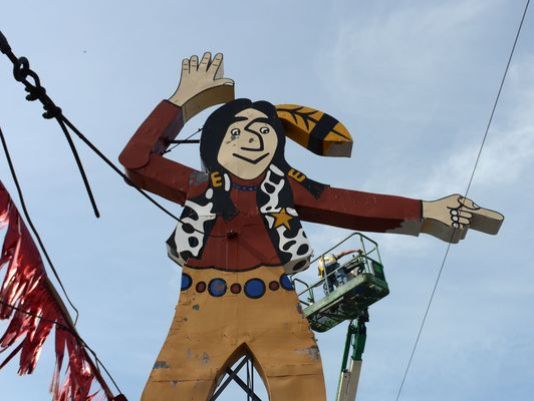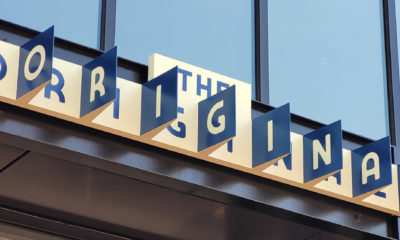It often amazes me how easily offended many in our society become. A single daily news cycle seemingly can’t pass without a story about someone’s outrage that an individual or organization has defamed them. Civil discourse has been replaced by those with opposing viewpoints yelling at one another. We seem to live in a polarized world; any issue entails strident support or opposition. Nuanced opinions, those that leave room to find common ground and a path towards a productive solution, generally become cast aside for those that will grab headlines.
What does this digression have to do with signage? In the November 13 online edition of the Cincinnati Enquirer, a sign became the centerpiece of a protest petition — in my opinion, a textbook manifestation of political correctness run amok.
Approximately 60 years ago, a Pontiac dealership was built in the Cincinnati neighborhood of Carthage. Its main, on-premise drawing card was a 50-ft.-tall depiction of a young brave, with braided, feather-clad hair, which came simply to be known as the “Big Indian.” This iconic sign – perhaps not as famous as the “Big Chicken” in Marietta, GA, near Atlanta, but prominent nonetheless – has given people traversing the neighborhood a frame of reference. And, more than likely, helped sell quite a few cars.
Some time ago, Pontiac vacated the dealership, and it’s since transitioned to Motor Time Auto Sales, a used-car lot. He no longer glows with neon, and his arms are now immobile – city officials later decided that an aging sign with moving parts over a busy street might be hazardous – but the Big Indian still stands tall. Earlier this year, he received some metal repairs and a fresh coat of paint.
However, through www.change.org, Judy Gibson-Combs, who runs a Native American-themed store in Bryant, IN, has started a petition to have the sign removed. Her goal is to receive 200 signatures, and deliver it to Motor Time’s owners, in hopes they’ll have it removed. Although she’s received more than 100 signatures to date, an opinion poll linked to the Enquirer article probably paints a more accurate portion of public sentiment. When asked if the sign is racist, “No” responses outweighed “Yes” by a 20-to-1 margin.
While this may not be the most noble usage of Native American imagery, I fail to see how it’s tangibly injurious to anyone. Surely people have bigger issues to occupy their time and energy. If someone truly wants to help Native Americans, contributions to help assuage rampant poverty and counteract the lack of job opportunities on reservations and other areas where Native Americans are heavily concentrated would do far more good.
Advertisement
In a way, this tempest in a teapot serves as an apt metaphor for how signs are sometimes treated by those with jurisdiction over them. Most appreciate the economic benefit that sign provide in creating vibrant commercial districts and attracting customers. However, it’s the few who think that on-premise signage violates some pristine, aesthetic ideal who yell the loudest, and, unfortunately, sometimes sway those with authority to write draconian, regressive sign codes.
Too often, majorities stay silent, which enables small minorities to hold disproportionate sway over important laws, policies or regulations. Let’s hope Motor Time’s owners heed common sense and don’t acquiesce to a few gadflies. Similarly, those in the sign business should, when threatened by opposing interests, tap into entities that support the sign industry and economic growth. The Chamber of Commerce, local business associations and, of course, sign-industry associations provide valuable resources to help you affirm signs’ value to city planners, code administrators and others with authority over sign regulations.
A whole is greater than the sum of its parts. The sign industry doesn’t collectively possess the size or clout of other industries, so, we must stand on common ground to advance. Learn, join and make your voice heard.


 Tip Sheet1 week ago
Tip Sheet1 week ago
 Photo Gallery3 days ago
Photo Gallery3 days ago
 Ask Signs of the Times5 days ago
Ask Signs of the Times5 days ago
 Real Deal2 weeks ago
Real Deal2 weeks ago
 Benchmarks1 week ago
Benchmarks1 week ago
 Photo Gallery9 hours ago
Photo Gallery9 hours ago
 Women in Signs2 weeks ago
Women in Signs2 weeks ago
 Women in Signs1 week ago
Women in Signs1 week ago













